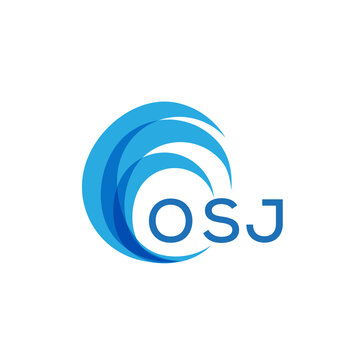Customer Orientation: The Cornerstone of Modern Marketing Concepts
Understand customer orientation in marketing
Customer orientation stand as the fundamental principle that drive the modern marketing concept. At its core, it represents a business philosophy where all company decisions and activities revolve around satisfy customer needs and want. Unlike traditional product centric approaches, customer orientation shifts the focus from” what can we sell? ” To” what do customers want to buy? ”
This approach require organizations to deeply understand their target audience through comprehensive market research, continuous feedback collection, and data analysis. Companies that embrace customer orientation don’t exactly react to express needs but proactively anticipate future requirements.
The evolution of marketing philosophy
The marketing concept has evolved importantly over decades, transform from production orient to customer orient approaches:
Production orientation
Initially, businesses focus principally on manufacture efficiency and product availability. During this era, Henry Ford’s famous quote,” customers can have any color equally recollective as it’s black, ” xemplify the production orient mindset where consumer preferences take a backseat to operational efficiency.
Product orientation
As markets develop, companies begin compete on product features and quality. The assumption was that superior products would course attract customers, oftentimes neglect whether these features really address customer needs.
Sell orientation
With increased competition, businesses shift to aggressive selling tactics. This approach assume customers would purchase products through persuasive selling techniques, disregarding of whether the offerings match their actual requirements.
Marketing orientation
The marketing concept emerge as organizations recognize the importance of identify customer needs before develop products. This customer-centric philosophy transforms business strategy by place customer satisfaction at the center of all activities.
Societal marketing orientation
The well-nigh recent evolution incorporate not entirely customer needs but besides societal advantageously being and environmental concerns into marketing decisions.
Core elements of customer orientation in marketing
Customer orientation manifest through several key components that jointly form the marketing concept:
Market research and customer insights
Customer orient companies invest intemperately in understand their target audience. They conduct regular market research use surveys, focus groups, interviews, and digital analytics to gather insights about customer preferences, pain points, and behaviors.
Amazon exemplifies this approach with its customer obsess culture. The company endlesslanalyzesze customer data to improve its offerings, result in innovations like one click ordering and personalized recommendations that instantly address customer pain points.
Customer needs identification
Effective customer orientation require distinguish between express needs (what customers say they want )and latent needs ( (recognized requirements ).)ompanies that excel at customer orientation oftentimes identify needs that customers themselves haven’t nonetheless articulate.
Apple demonstrates this capability by systematically create products that customers didn’t know they need until they experience them. The originaliPhonee revolutionize mobile technology by address latent needs for intuitive, multi functional devices.
Cross-functional integration
Customer orientation extend beyond the marketing department to become an organization wide philosophy. Every department — from product development to customer service — must align with the goal of deliver superior customer value.
Ritz-Carlton hotels implement this principle through their motto,” we are ladies and gentlemen serve ladies and gentlemen. ” eEveryemployee, careless of position, is eempoweredto spend up to$22,000 to resolve customer issues without managerial approval.
Continuous feedback loops
Customer orient businesses establish mechanisms for ongoing feedback collection. They actively seek customer input throughout the product lifecycle and use this information to drive continuous improvements.
Tesla exemplifies this approach by gather real time data from vehicles and implement software updates base on user feedback, efficaciously treat their products as evolve platforms quite than static offerings.
The strategic impact of customer orientation
When right implement, customer orientation deliver substantial strategic advantages:
Enhanced customer satisfaction and loyalty
By address actual customer needs, organizations create offerings that truly solve problems and deliver value. This course lead to higher satisfaction levels, which translate into repeat business and customer loyalty.
Research systematically show that increase customer retention rates by merely 5 % can increase profits by 25 % to 95 %. This occurs because satisfied customers not but continue purchase but oftentimes increase their spending over time.
Competitive differentiation
In markets flood with similar products, customer orientation provide a powerful differentiator. Companies that sincerely understand and address customer needs can stand out yet in extremely competitive environments.
Zappos distinguish itself in the crowded online retail space through its exceptional customer service, include its famous 365-day return policy and 24/7 customer support. This customer-centric approach helps the company achieve remarkable growth despite intense competition.
Product innovation
Customer orientation fuel innovation by direct development efforts toward actual market need quite than internal assumptions. This results in products with higher adoption rates and commercial success.
Lego’s revival demonstrate this principle in action. After face near bankruptcy, the company implements extensive customer research programs, include theLegoo ambassador network, which involve customers in product development. This customer orient approach lead to successful product lines likeLegoo ideas, where customer designs become actual products.
Marketing efficiency
Understand customer need allow for more targeted and effective marketing communications. Messages can be craft to address specific pain points and desires, result in higher conversion rates and market ROI.
Dollar Shave Club disrupt the razor industry by recognize customer frustration with expensive razors and inconvenient purchasing processes. Their marketing straightaway address these pain points with memorable messaging that resonate with their target audience.
Implement customer orientation in marketing strategy
Transform marketing strategy to embrace customer orientation require systematic changes across multiple dimensions:
Organizational culture shift
Customer orientation begin with establish a culture where customer satisfaction become everyone’s responsibility. This requires leadership commitment, appropriate incentive structures, and regular reinforcement ofcustomer-centricc values.
Nordstrom’s legendary customer service stem from a culture encapsulate in their employee handbook, which magnificently contain equitable one rule:” use good judgment in all situations. ” tThiseempowersemployees to prioritize customer needs above rigid policies.
Customer segmentation and targeting
Effective customer orientation recognize that different customer groups have distinct needs and preferences. Strategic segmentation allow organizations to tailor their offerings and communications to specific customer segments.
Spotify excels at segmentation through its algorithm drive personalization. The platform create extremely customize experiences for each user, from personalized playlists to recommend artists, all base on individual listening patterns.
Value proposition development
Base on customer insights, organizations must craft compelling value propositions that intelligibly articulate how their offerings address specific customer need advantageously than alternatives.
Airbnb’s value proposition of” belong anyplace ” traightaway address travelers’ desire for authentic, local experiences — a need that traditional hotels oftentimes fail to meet.
Customer journey mapping
Understand the complete customer experience from awareness through post purchase support helps identify opportunities to deliver superior value at each touchpoint.
Disney create magical customer experiences by meticulously mapping and optimize every aspect of the guest journey, from booking to departure. Their magic band technology exemplify how customer journey mapping can lead to innovations that enhance the overall experience.
Measure customer orientation effectiveness
To ensure customer orientation deliver tangible business results, organizations must implement appropriate metrics and measurement systems:

Source: marketing91.com
Customer satisfaction metrics
Net promoter score (nNPS) customer satisfaction score ( (aCSAT)nd customer effort score ( ce()CES)ide quantitative measures of customer satisfaction and loyalty. These metrics help organizations track the effectiveness of their customer orientation efforts over time.
Customer lifetime value
Calculate the total value a customer bring throughout their relationship with the company help justify investments in customer orient initiatives and measure their long term impact.
Customer retention rates
Monitor how many customers continue to do business with the company provide a direct indicator of customer orientation effectiveness. Increase retention rates typically signal successful customer orientation.
Voice of customer programs
Systematic collection and analysis of customer feedback through surveys, reviews, social media monitoring, and direct interactions provide qualitative insights to complement quantitative metrics.
Challenges in implement customer orientation
Despite its benefits, organizations face several challenges when implement customer orientation:
Balance customer needs with business objectives
While focus on customer needs is essential, organizations must ensure their customer orientation approach remain financially viable. This requires find the sweet spot where customer satisfaction and business profitability align.
Short term pressures vs. Long term relationships
Quarterly financial targets and shareholder expectations can sometimes conflict with customer orientation initiatives that deliver returns over longer timeframes. Organizations must navigate these compete pressures efficaciously.
Information overload
Modern analytics tools provide unprecedented customer data, but extract meaningful insights from this information require sophisticated analytical capabilities and clear strategic focus.
Cross-functional alignment
Ensure consistent customer orientation across departments with different priorities and performance metrics present organizational challenges that require strong leadership and appropriate incentive structures.
The future of customer orientation in marketing
Customer orientation continue to evolve with technological advancements and change consumer expectations:
Hyper personalization
Advanced analytics and AI enable progressively personalize experiences tailor to individual customer preferences and behaviors. This represents the ultimate expression of customer orientation — treat each customer as a segment of one.
Predictive customer intelligence
Kinda than but respond to express needs, lead organizations use predictive analytics to anticipate customer requirements before they’re articulated. This proactive approach represents the frontier of customer orientation.
Co creation and customer collaboration
The distinction between producers and consumers continue to blur as organizations actively involve customers in product development, marketing, and still strategic decision make processes.
Ethical customer orientation
As consumers progressively consider companies’ social and environmental impacts, customer orientation expand to include ethical considerations. Organizations must align their offerings with customers’ values and broader societal concerns.
Conclusion
Customer orientation represent the heart of the modern marketing concept. By place customer need at the center of all business activities, organizations create a foundation for sustainable competitive advantage. This approach transform marketing from a departmental function to an organization wide philosophy that guide product development, communication strategies, and customer experiences.
The nigh successful organizations recognize that customer orientation isn’t upright a marketing strategy but a fundamental business principle that drive innovation, differentiation, and long term profitability. As markets become progressively competitive and consumers gain more power through information access and choice, customer orientation become not upright advantageous but essential for business success.
By consistently understand customer needs, develop offerings that deliver superior value, and endlessly measure and improve customer experiences, organizations can harness the full power of customer orientation within the marketing concept. Those that master this approach position themselves for sustained growth and customer loyalty in an always change marketplace.

Source: tutor2u.net



